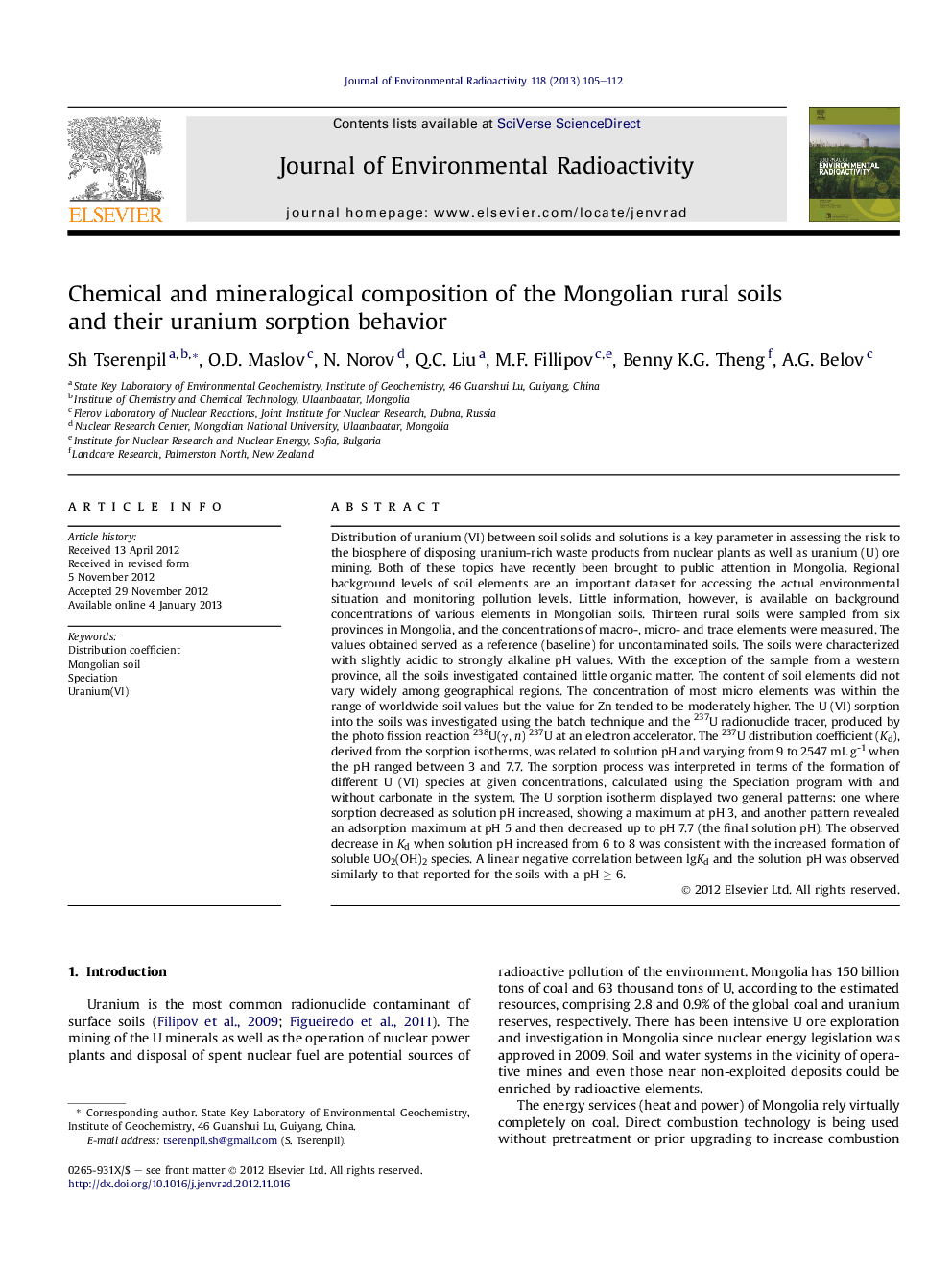| کد مقاله | کد نشریه | سال انتشار | مقاله انگلیسی | نسخه تمام متن |
|---|---|---|---|---|
| 1738215 | 1521615 | 2013 | 8 صفحه PDF | دانلود رایگان |

Distribution of uranium (VI) between soil solids and solutions is a key parameter in assessing the risk to the biosphere of disposing uranium-rich waste products from nuclear plants as well as uranium (U) ore mining. Both of these topics have recently been brought to public attention in Mongolia. Regional background levels of soil elements are an important dataset for accessing the actual environmental situation and monitoring pollution levels. Little information, however, is available on background concentrations of various elements in Mongolian soils. Thirteen rural soils were sampled from six provinces in Mongolia, and the concentrations of macro-, micro- and trace elements were measured. The values obtained served as a reference (baseline) for uncontaminated soils. The soils were characterized with slightly acidic to strongly alkaline pH values. With the exception of the sample from a western province, all the soils investigated contained little organic matter. The content of soil elements did not vary widely among geographical regions. The concentration of most micro elements was within the range of worldwide soil values but the value for Zn tended to be moderately higher. The U (VI) sorption into the soils was investigated using the batch technique and the 237U radionuclide tracer, produced by the photo fission reaction 238U(γ, n) 237U at an electron accelerator. The 237U distribution coefficient (Kd), derived from the sorption isotherms, was related to solution pH and varying from 9 to 2547 mL g-1 when the pH ranged between 3 and 7.7. The sorption process was interpreted in terms of the formation of different U (VI) species at given concentrations, calculated using the Speciation program with and without carbonate in the system. The U sorption isotherm displayed two general patterns: one where sorption decreased as solution pH increased, showing a maximum at pH 3, and another pattern revealed an adsorption maximum at pH 5 and then decreased up to pH 7.7 (the final solution pH). The observed decrease in Kd when solution pH increased from 6 to 8 was consistent with the increased formation of soluble UO2(OH)2 species. A linear negative correlation between lgKd and the solution pH was observed similarly to that reported for the soils with a pH ≥ 6.
Journal: Journal of Environmental Radioactivity - Volume 118, April 2013, Pages 105–112